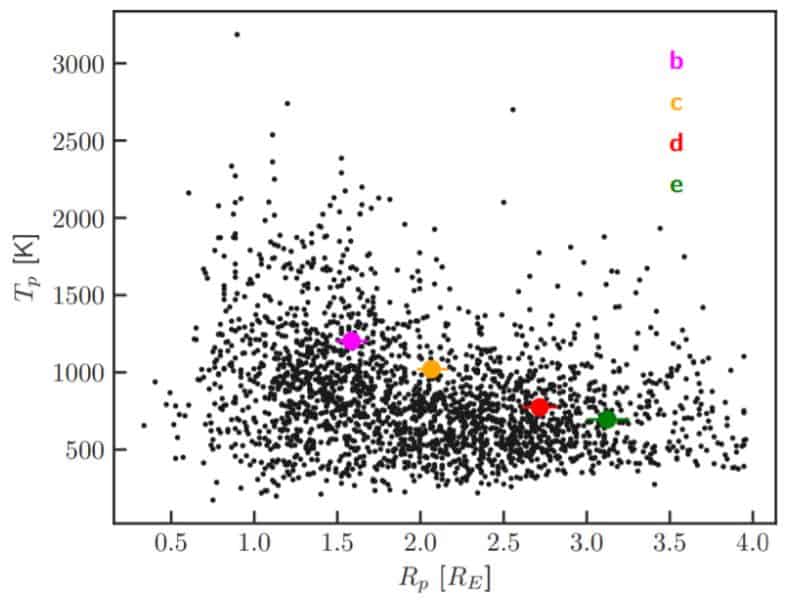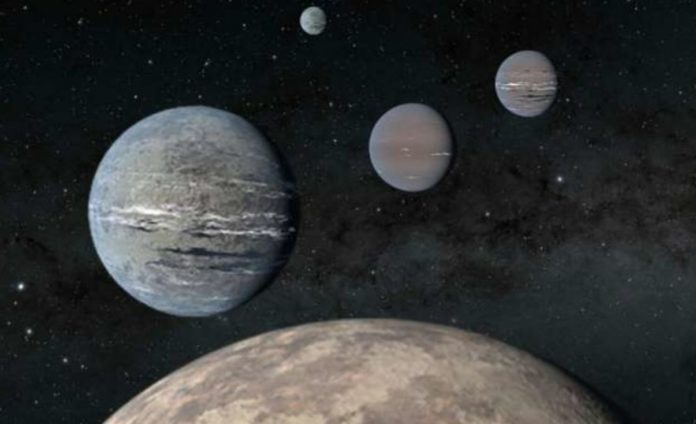Astronomers using ground-based and space telescopes and with the help of two high school students who were involved in the processing of observation data, have found a system of four exoplanets in a sun-like star close to Earth.
Using multi-exoplanet systems, astronomers can test patterns of planet formation, evolution, and orbital migration. In particular, the study of such systems can allow to understand the origin of the “desert of sub-neptune” – the observed lack of exoplanets with radii from 1.5 to 2 Earth radii near stars.
- Does This Mean We Stopped Being Animal and Started Being Human Due to ‘Copy Paste’ Errors?
- The One Lifestyle Choice That Could Reduce Your Heart Disease Risk By More Than 22%
- Aging: This Is What Happens Inside Your Body Right After Exercise
- Immune-Boosting Drink that Mimics Fasting to Reduce Fat – Scientists ‘Were Surprised’ By New Findings
- Gun Violence in America: What They Don’t Talk About at the Debate
It is assumed that this may be due to the photo evaporation of their atmospheres, which is why the planets actively lose their mass. In addition, scientists are interested in understanding how the evolution and habitability of exoplanets with age and spectral type of their star depends.
A group of astronomers led by Tansu Daylan from the Institute of Astrophysics and Space Research at MIT announced the discovery of the TOI-1233 system of four exoplanets around the star HD 108236, located about 200 light-years from the Sun. The discovery was originally made by the TESS space telescope, which observed the transits of planets across the star’s disk in 2019, later it was confirmed using data from observations of ground-based telescopes. It is noteworthy that two high school students (16 and 18 years old) participated in the work, who were engaged in processing data from the TESS telescope at the Harvard-Smithsonian Center for Astrophysics and can be considered one of the youngest astronomers to make such a discovery.
The mass of the star HD 108236 is 0.9 solar masses, and its radius is 0.88 solar radius. Its effective temperature is estimated at 5730 Kelvin, and its age is 5.8 billion years. Four exoplanets revolve around the star, the closest is HD 108236b, which has been classified as hot rocky super-earths, has a radius of 1.58 Earth’s radius and makes one revolution around the star in 3.79 Earth days. The other three exoplanets TOI-1233 have been classified as sub-Neptune.
The radii of HD 108236c, HD 108236d, and HD 108236e were estimated at 2.06, 2.72, and 3.12 Earth radii, respectively, and the periods of revolution around the star were estimated at 6.2, 14.17 and 19.59 Earth days, respectively.
Scientists believe that the planetary system around the star HD 108236 is consistent with the photoevaporation model, which may explain the absence of a gas envelope in the exoplanet closest to the star.
- Does This Mean We Stopped Being Animal and Started Being Human Due to ‘Copy Paste’ Errors?
- The One Lifestyle Choice That Could Reduce Your Heart Disease Risk By More Than 22%
- Aging: This Is What Happens Inside Your Body Right After Exercise
- Immune-Boosting Drink that Mimics Fasting to Reduce Fat – Scientists ‘Were Surprised’ By New Findings
- Gun Violence in America: What They Don’t Talk About at the Debate
The star itself is very bright and similar to the Sun, and the planets cover a wide range of radii and equilibrium temperatures, the TOI-1233 system is an excellent target for spectroscopic observations using the future James Webb Space Telescope.


In addition, the CHEOPS telescope will also observe the planets, which should help scientists clarify the radii of exoplanets.
The article was published in The Astronomical Journal.
